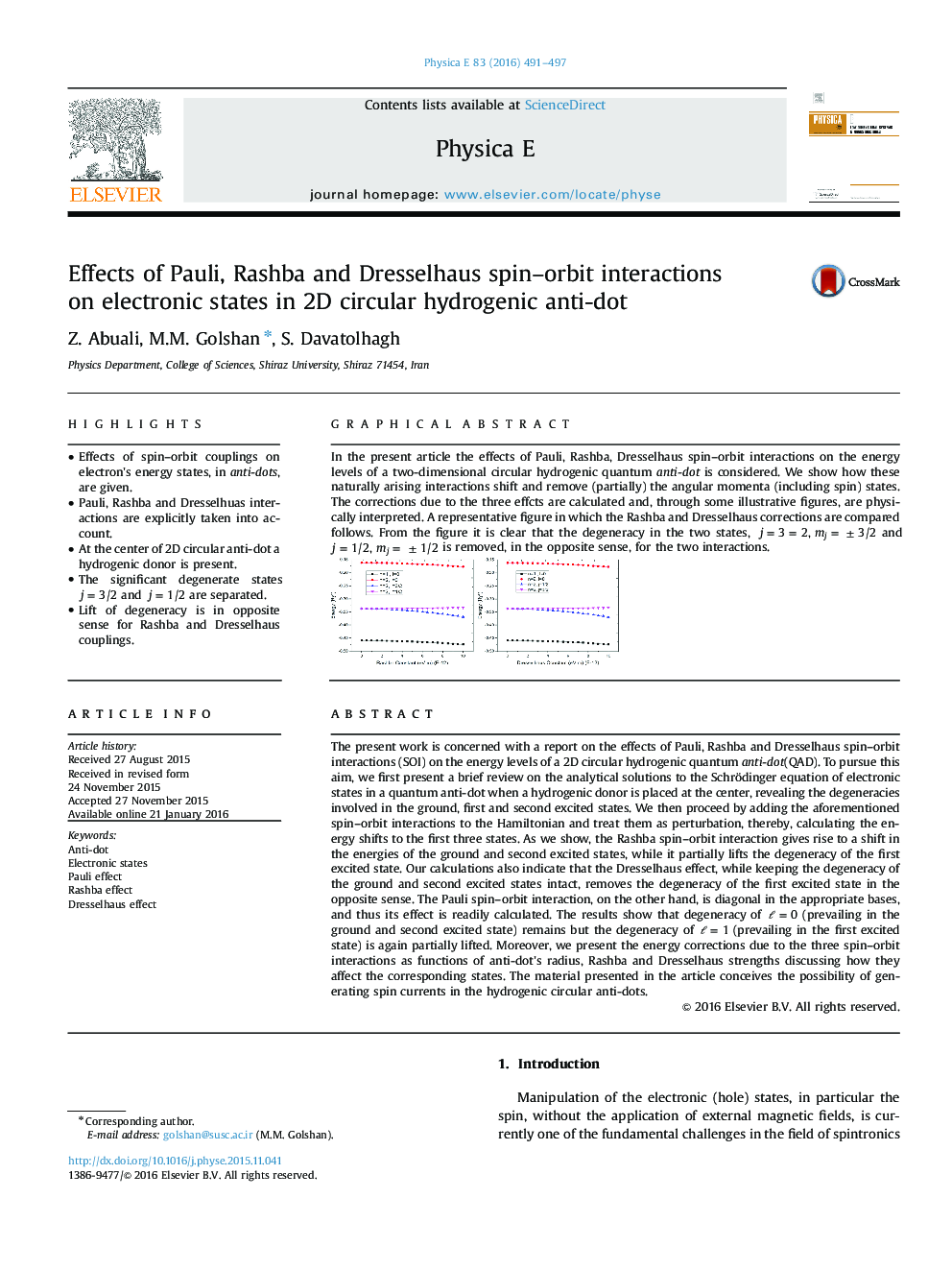| کد مقاله | کد نشریه | سال انتشار | مقاله انگلیسی | نسخه تمام متن |
|---|---|---|---|---|
| 1543806 | 1512866 | 2016 | 7 صفحه PDF | دانلود رایگان |
• Effects of spin–orbit couplings on electron's energy states, in anti-dots, are given.
• Pauli, Rashba and Dresselhuas interactions are explicitly taken into account.
• At the center of 2D circular anti-dot a hydrogenic donor is present.
• The significant degenerate states j=3/2j=3/2 and j=1/2j=1/2 are separated.
• Lift of degeneracy is in opposite sense for Rashba and Dresselhaus couplings.
The present work is concerned with a report on the effects of Pauli, Rashba and Dresselhaus spin–orbit interactions (SOI) on the energy levels of a 2D circular hydrogenic quantum anti-dot (QAD). To pursue this aim, we first present a brief review on the analytical solutions to the Schrödinger equation of electronic states in a quantum anti-dot when a hydrogenic donor is placed at the center, revealing the degeneracies involved in the ground, first and second excited states. We then proceed by adding the aforementioned spin–orbit interactions to the Hamiltonian and treat them as perturbation, thereby, calculating the energy shifts to the first three states. As we show, the Rashba spin–orbit interaction gives rise to a shift in the energies of the ground and second excited states, while it partially lifts the degeneracy of the first excited state. Our calculations also indicate that the Dresselhaus effect, while keeping the degeneracy of the ground and second excited states intact, removes the degeneracy of the first excited state in the opposite sense. The Pauli spin–orbit interaction, on the other hand, is diagonal in the appropriate bases, and thus its effect is readily calculated. The results show that degeneracy of ℓ=0ℓ=0 (prevailing in the ground and second excited state) remains but the degeneracy of ℓ=1ℓ=1 (prevailing in the first excited state) is again partially lifted. Moreover, we present the energy corrections due to the three spin–orbit interactions as functions of anti-dot's radius, Rashba and Dresselhaus strengths discussing how they affect the corresponding states. The material presented in the article conceives the possibility of generating spin currents in the hydrogenic circular anti-dots.
In the present article the effects of Pauli, Rashba, Dresselhaus spin–orbit interactions on the energy levels of a two-dimensional circular hydrogenic quantum anti-dot is considered. We show how these naturally arising interactions shift and remove (partially) the angular momenta (including spin) states. The corrections due to the three effcts are calculated and, through some illustrative figures, are physically interpreted. A representative figure in which the Rashba and Dresselhaus corrections are compared follows. From the figure it is clear that the degeneracy in the two states, j=3=2,mj=±3/2j=3=2,mj=±3/2 and j=1/2,mj=±1/2j=1/2,mj=±1/2 is removed, in the opposite sense, for the two interactions.Figure optionsDownload as PowerPoint slide
Journal: Physica E: Low-dimensional Systems and Nanostructures - Volume 83, September 2016, Pages 491–497
